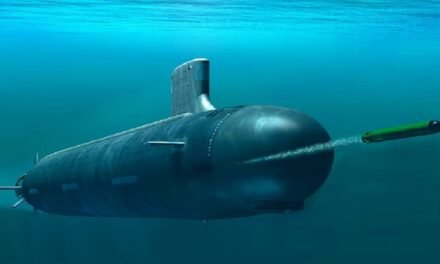Satellites are sophisticated machines designed to perform a wide range of tasks, such as communication, navigation, earth observation, and scientific research. While specific designs vary depending on their mission, all satellites share several key components. Here’s an overview of these components and their functions:
1. Structural System (Bus)
- Purpose:
- Provides the framework for the satellite, housing all components and ensuring structural integrity.
- Components:
- Main Frame:
- Holds payloads, power systems, and propulsion units securely.
- Thermal Insulation:
- Protects the satellite from extreme temperatures in space.
- Main Frame:
- Function:
- Maintains stability during launch, operation, and potential impacts from micrometeoroids or space debris.
2. Payload
- Purpose:
- The payload is the mission-specific component that performs the satellite’s primary function.
- Examples:
- Communication Satellites:
- Transponders and antennas for relaying signals.
- Earth Observation Satellites:
- Cameras, imaging sensors, and spectrometers for monitoring the Earth.
- Scientific Satellites:
- Instruments like telescopes, particle detectors, or magnetometers for research.
- Navigation Satellites:
- Atomic clocks and signal transmitters for positioning systems (e.g., GPS).
- Communication Satellites:
3. Power System
- Purpose:
- Supplies and manages the energy required for all satellite operations.
- Components:
- Solar Panels:
- Convert sunlight into electrical energy. Deployed after launch and optimized for maximum exposure.
- Batteries:
- Store energy for use during periods without sunlight (e.g., when in Earth’s shadow).
- Power Distribution Unit:
- Distributes energy to various components and ensures stable power supply.
- Solar Panels:
- Function:
- Provides continuous power for payloads, onboard computers, and communication systems.
4. Propulsion System
- Purpose:
- Controls the satellite’s position and trajectory in orbit.
- Components:
- Thrusters:
- Small engines for orbital corrections and maintaining the desired position.
- Propellant Tanks:
- Store fuel for thrusters.
- Reaction Control System (RCS):
- Fine-tunes orientation using small bursts of thrust.
- Thrusters:
- Function:
- Adjusts orbit, compensates for drag (in low Earth orbit), and controls deorbiting at the end of the mission.
5. Attitude Control System (ACS)
- Purpose:
- Manages the satellite’s orientation (attitude) to ensure proper alignment for communication, imaging, or solar panel positioning.
- Components:
- Gyroscopes:
- Measure angular velocity for precise attitude adjustments.
- Reaction Wheels:
- Adjust orientation by transferring momentum within the satellite.
- Magnetorquers:
- Use Earth’s magnetic field to adjust orientation in a low-power way.
- Star Trackers and Sun Sensors:
- Provide accurate positioning data by observing stars or the Sun.
- Gyroscopes:
- Function:
- Keeps the payload aligned with its target and solar panels facing the Sun.
6. Communication System
- Purpose:
- Facilitates data transmission between the satellite and ground stations.
- Components:
- Antennas:
- Send and receive signals. High-gain antennas are used for narrow, long-distance communication, while low-gain antennas cover broader areas.
- Transponders:
- Amplify and relay communication signals.
- Telemetry and Command Units:
- Send operational data to ground stations and receive commands from operators.
- Antennas:
- Function:
- Enables satellite control and transmission of mission data back to Earth.
7. Thermal Control System
- Purpose:
- Maintains optimal temperature for satellite components, protecting them from extreme heat or cold.
- Components:
- Radiators:
- Dissipate excess heat.
- Insulation:
- Protects against extreme temperature variations.
- Heaters:
- Prevent sensitive components from freezing.
- Thermal Coatings:
- Reflect or absorb sunlight to maintain thermal balance.
- Radiators:
- Function:
- Ensures components function reliably within their temperature tolerances.
8. Onboard Computer (OBC)
- Purpose:
- Controls and coordinates satellite operations.
- Components:
- Processors:
- Execute software for data processing, navigation, and payload control.
- Memory:
- Stores operational data, system logs, and mission data.
- Redundancy Systems:
- Backup computers ensure reliability in case of failures.
- Processors:
- Function:
- Executes commands, processes sensor data, and manages communication between subsystems.
9. Sensors
- Purpose:
- Provide critical data for navigation, positioning, and mission-specific tasks.
- Types:
- Star Trackers:
- Determine orientation by mapping star patterns.
- Sun Sensors:
- Align solar panels with the Sun.
- Earth Sensors:
- Track the Earth’s horizon for positioning.
- Payload Sensors:
- Collect mission-specific data (e.g., cameras, spectrometers, radiometers).
- Star Trackers:
- Function:
- Enable precise positioning and accurate execution of the satellite’s mission.
10. Ground Segment Integration
- Purpose:
- Although not physically part of the satellite, ground systems are critical for satellite operation.
- Components:
- Ground Stations:
- Receive data and send commands.
- Control Centers:
- Manage satellite operations, monitor health, and execute mission plans.
- Ground Stations:
- Function:
- Provides operational oversight and ensures the satellite performs its intended tasks.
Satellites function as highly integrated systems, with each component playing a vital role in achieving mission objectives. Whether used for communication, navigation, reconnaissance, or research, these components work in harmony to ensure that satellites operate effectively in the challenging environment of space.













